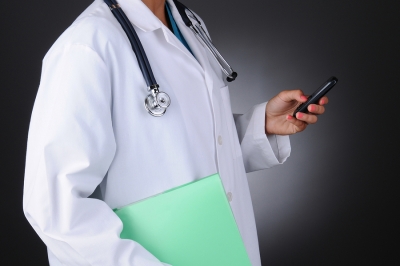There are more than 6.8 billion mobile phones in the world. This means that there is one phone per person. That many cell phones and users means mobile technology is doing a lot more than just transforming communication – it is improving many industries, with the major one being healthcare. Federal incentive payments are used to motivate healthcare organizations to make use of EHRs (Electronic Health Record Systems).
There are Medicare and Medicaid Electronic Health Records (EHR) incentive programs that provide financial stimulus to eligible hospitals and healthcare professionals as they implement and adopt certified EHR technology. While hospitals and healthcare professionals can receive financial support from the Medicare and Medicaid EHR programs, establishing the meaningful utilization of EHRs needs time and resources.
Meanwhile, home healthcare providers have shown immense interest towards healthcare applications without a lot of prompting. These home healthcare applications are used on smart phones or tablets, and they perform some specific tasks like aggregating medical information or chartering data points.
In a surveyincluding of 4,000 physicians, it was found that 80% of health care providers use phones or tablets that are capable of running healthcare apps. One reason for the popularity of healthcare applications among providers is that these apps deliver information whenever and wherever it is needed. Also, these applications are flexible and can run on various platforms like iOS and Android.
Types of health care apps
- Clinical reference apps: These apps give providers the access to important clinical information, thus giving providers better diagnostic tools.
- Diagnostic apps: Using built-in algorithms, these apps help doctors diagnose the patient’s disease.
- Electronic Visit Verification (EVV): This system makes timekeeping for home healthcare providers easier, faster, and more accurate.
- Disease management apps: These apps help providers in managing their patients’ chronic conditions like asthma and diabetes.
Advantages of mobile technology in health care
Improved quality: Mobile technology helps improve the patient’s health by allowing the healthcare provider to keep track of their condition. These apps allow logging the patient’s details so that there is a visible difference in their health status.
Easy access to medical materials: Smartphones allow home healthcare providers to have an easy access to medical libraries. Medical material apps provide a virtually limitless database to providers that they can access anywhere and anytime.
Reduction in per capita health care cost: While the mobile technology in health care increases the quality of medical services, it also reduces the per capita health care costs. As the diseases can be diagnosed at an early stage, there are fewer reasons for surgery and extensive treatment.
Allows doctors connect with each other: It helps in increasing the social availability of healthcare providers so that they can connect with each other. With exclusive networking apps, doctors around the world can connect and share their experience, thus enhance their knowledge.
By turning mobile phones into monitoring and reference devices – mobile healthcare or mHealth apps -- allow home health care providers to streamline their work and handle multiple patients. As mobile devices become easily available throughout the world, they form a base for treatment and communication, allowing patients to have easy access to better healthcare facilities.
 Mobile technology is infiltrating every aspect of our lives and the home health business is no exception. There are many advantages to using mobile technology – Electronic Visit Verification (EVV), HIPAA-compliant instant messaging, saving time and money on paperwork, and many other features.
Mobile technology is infiltrating every aspect of our lives and the home health business is no exception. There are many advantages to using mobile technology – Electronic Visit Verification (EVV), HIPAA-compliant instant messaging, saving time and money on paperwork, and many other features.
It’s exciting to think of the operational efficiencies. Does your software provide mobile access to your software via a tablet or Smartphone? If not, you may want to consider switching to software that does. Here’s why:
# 1 More focus on patient care – being only a keystroke away when the nurse or therapist is in the home, means more patient-centered care and real-time reporting.
# 2 Bottom-line Savings – saving time on data entry time and decreased errors in reporting means less administrative time spent on correcting errors.
# 3 Compliance -- accountability is everything and the days of having a signature on paper as a way to verify services is over. Mobile EVV with GPS improves accountability and efficiency by ensuring care is delivered to care recipients when and where providers claim they are delivering those services.
# 4 Job satisfaction – care providers will appreciate the time they save on extensive data entry at the end of the day. Verifying visits at the point of care means more time spent on patient care and less time on paperwork and accurately calculating time and mileage helps keep providers and agency reimbursements in check.
# 5 Easier Scheduling – providers can access their schedule and see appointments in real-time. Even if they are in transit, they can quickly re-route or find the quickest way to their destination with GPS. Since all providers can see schedules, there can be less overlap or time spent on missed visits.
# 6 Capitalizing on the latest technology – As an agency, keeping up with the best technology is vital to growth. Technology will only play a bigger and bigger role in the entire health care industry; therefore being proactive will go a long way in helping agencies thrive.

